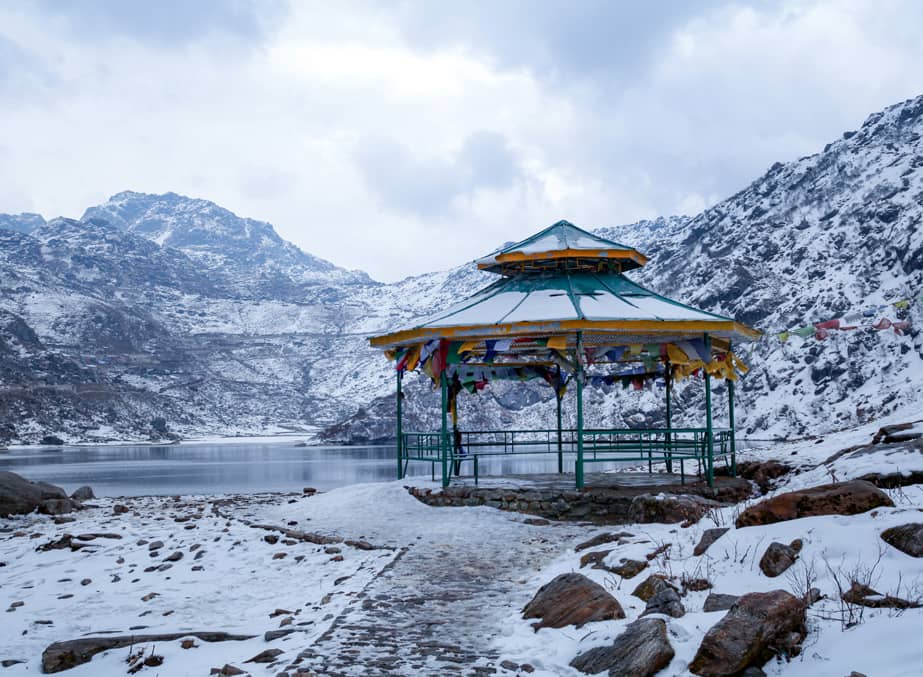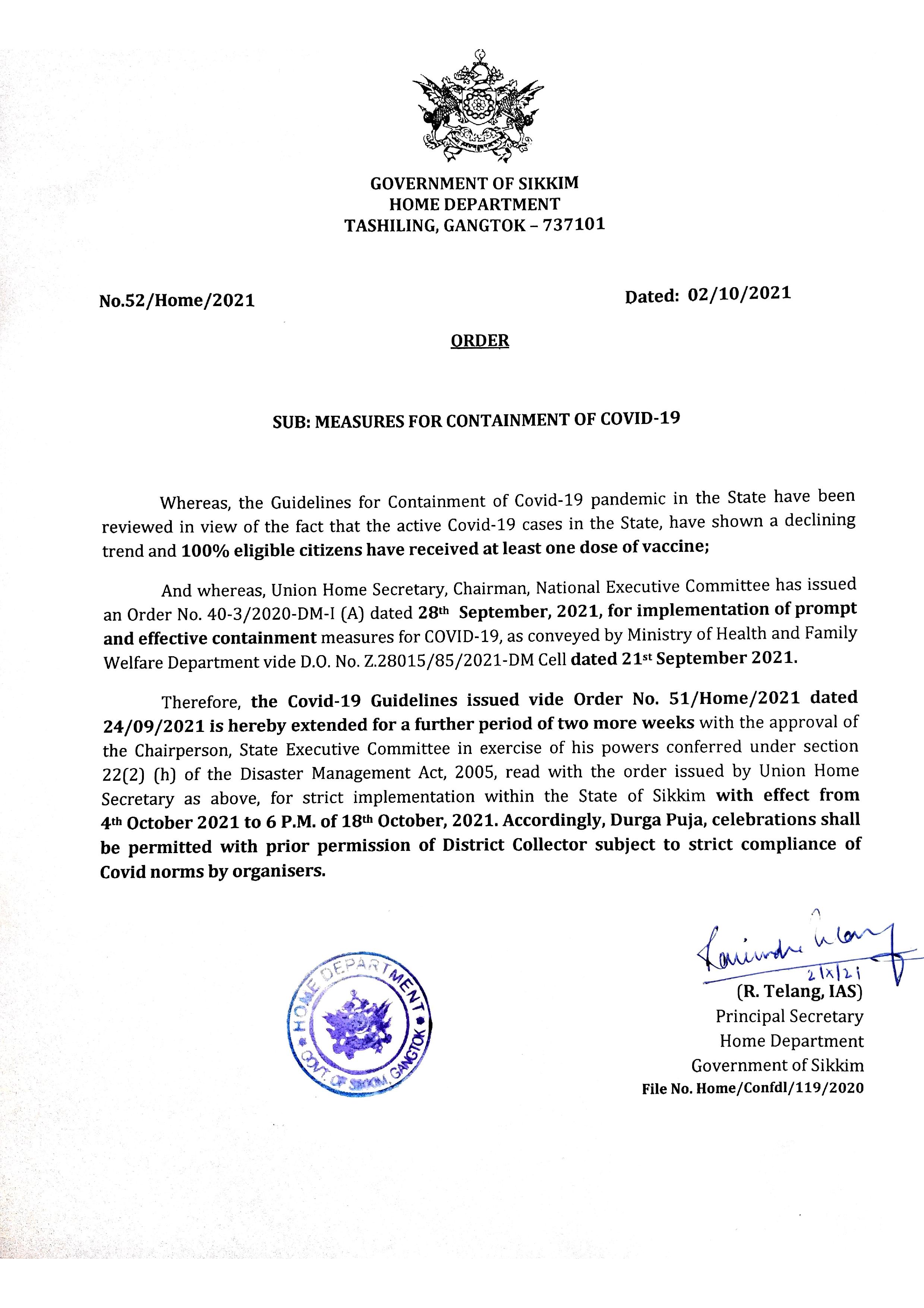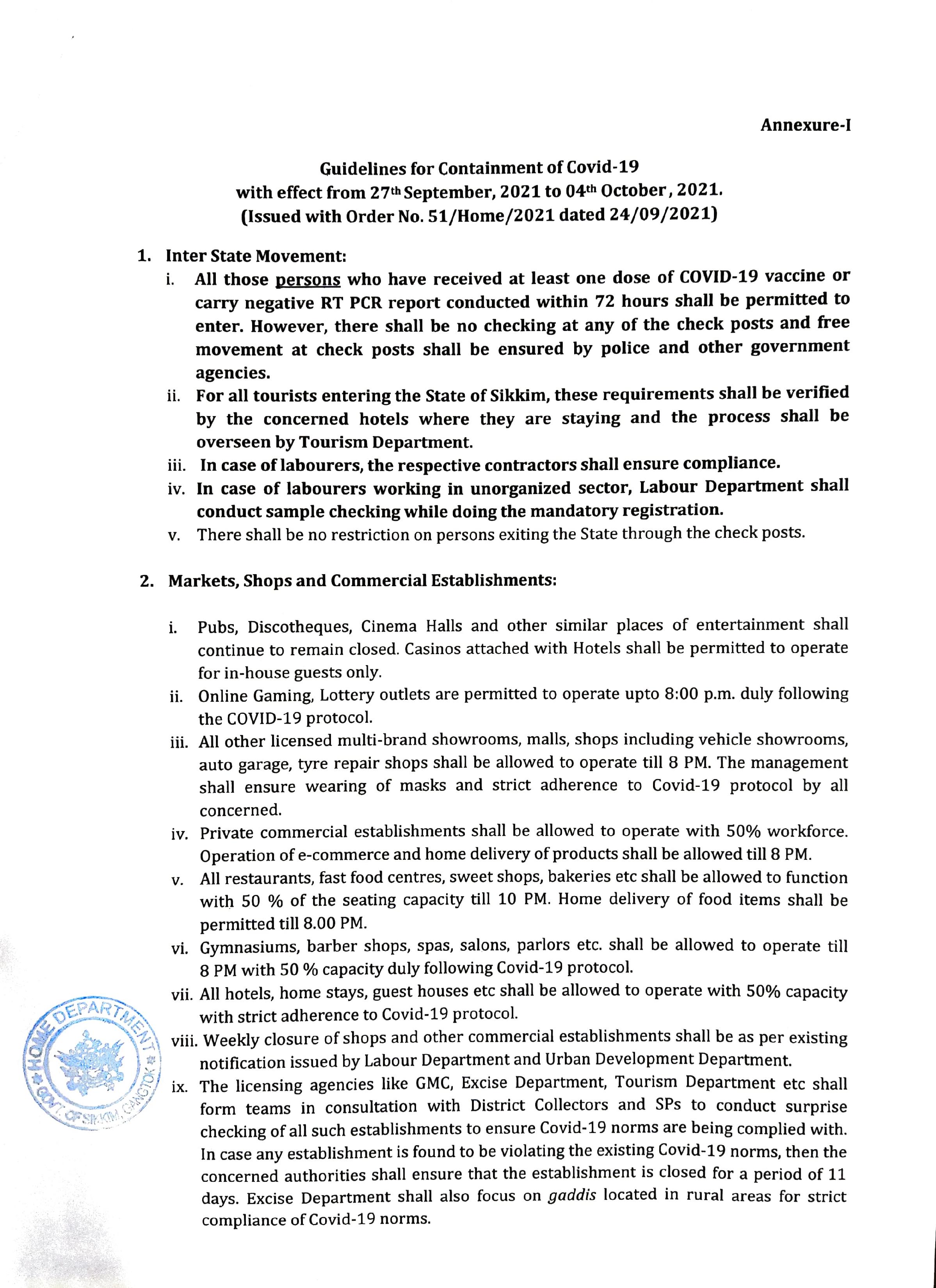Weather and Climate
Weather and Climate
Weather and Climate
Sikkims geographical location with its altitudinal variation allows it to have tropical, temperate and alpine climatic conditions within its small area of 7,096 kms.Temperature conditions vary from sub-tropical in the southern lower parts to cold deserts in the snowy north. It is also the most humid region in the whole range of the Himalayas, because of its proximity to the Bay of Bengal and direct exposure to Southern monsoon. Sikkim's climate ranges from sub-tropical in the south to tundra in the north. Most of the inhabited regions of Sikkim experience a temperate climate, with temperatures seldom exceeding 28 °C (82 °F) in summer. The average annual temperature for most of Sikkim is around 18 °C (64 °F).

Winter
January - March
Average daytime temp. : -5 to 7 ˚C
The winter season is charming and perfect for vacation as the whole area is enveloped in snow. Most areas of the state receive snowfall and get engulfed in the blanket of thick snow, thus luring tourists. During November, even though it does not snow, the temperature is quite apt for sightseeing.Alm...

Summer
March - April
Average daytime temp. : 5 to 25 ˚C
Summers in Sikkim aren’t as harsh as everywhere else in India. During this season, the weather remains pleasant, thus, making it the best time to visit Sikkim for certain parts of the state. During this time, one can also enjoy the flower festival. Summer is warm and moderate and is the ideal season...

Monsoon
April - December
Average daytime temp. : 4 to 17 ˚C
Monsoon is everyone’s beloved season. It is the time when nature wakes up from its deep sleep and rejuvenates. But the monsoon in Sikkim takes the form of incessant rain during the months from May till September while July be the wettest of all. Around 600-700 mm of rainfall takes place here each mo...
Best time to visit Sikkim
The best time to visit any place depends on the type of activities the traveler wants to indulge in. Sikkim is blessed with quite a pleasant weather and a trip to Sikkim can be planned at any time of the year depending on the interest of the traveler.Still , It is imperative to know the best time to visit Sikkim because this Northeastern state tops the wish-list of many travellers across the globe. Every season of this state has something different to offer to it's tourists. This is because states lying in the north-east part of India are known for their unparalleled natural beauty and significant opportunities for adventure sports.Sikkim is place well-known for its delightful natural beauty and dramatic landscapes. Most people visit Sikkim just to experience the charm of the colourful flora and fauna as well as the serenity of hilltop Buddhist monasteries such as Pemayangtse. However , The best time to visit Sikkim is either between March and May or October and mid-December.If you want to witness the blooming natural beauty in Gangtok best season to visit would be in spring, from March to May. Autumn, on the other hand, brings the clear view of Himalayan Range. If you want to capture the picturesque view of Himalayan Range, then October to December is the best season to visit Sikkim. During this time you can be part of various festivals like the Maniram Bhanjyang Tourism Festival where you can enjoy local homestays among many other things. You can also be a part of the Cherry Tea Festival as well as Red Panda Winter Festival. These festivals showcase a different side of Sikkim
Rainfall in Sikkim
The rainy season is classified into two types in Sikkim i.e. Summer rains and Winter rains. Southern Part of Sikkim sees more of summer rains, whereas Northern part foresees winter rains during August and September. Sikkim becomes a more mesmerizing and beautiful place to visit in monsoon season. The place feels like heaven because of the scenic beauty that enhances all the more at the time of monsoons. One can spot rare species of birds at this time. Try visiting Southern Part of Sikkim at the time of winter rains and Northern part in the months of May and June because of the different time of monsoon in north Sikkim and south.Rainfall is heavy and well distributed during the months from May to early October. July is the wettest month in most of the places. The intensity of rainfall during South-West monsoon season decreases from south to North, while the distribution of winter rainfall is in the opposite order. The highest annual rainfall for the individual station may exceed 5000 mm. and average number of rainy days (days withgangtok rain of 2.5 mm. or more) ranges from 100 at Thangu in north Sikkim to 184 at Gangtok in east Sikkim.But, as the state follows two rainy seasons i.e Summer rain and winter rain. It is found that the intensity of rainfall during Summer rain is more in Southern part of Sikkim while during winter rain the intensity shift to north. Thus, this permits the tourists to explore the northern part during May and June while the southern part can be travelled through during August and September, if only you could handle the issues like blocked roads and delayed flights.
Snowfall in Sikkim
Sikkim, which lies in the lap of Himalayas is one of the coldest places in the country. The North Eastern part of India is home to one of the tallest peeks in the world, Kanchenjunga, where the temperature falls as low as -32° C. Sikkim is one of the few states in India to receive regular snowfall. The snow line ranges from 6,100 metres (20,000 ft) in the south of the state to 4,900 metres (16,100 ft) in the north. The tundra-type region in the north is snowbound for four months every year, and the temperature drops below 0 °C (32 °F) almost every night. In north-western Sikkim, the peaks are frozen year-round; because of the high altitude, temperatures in the mountains can drop to as low as -40 °C (-40 °F) in winter..Some people are often confused about the places where they can enjoy the view of snowfall. Places like Nathula, Tsomgo lake, Gurudongmar lake, Yumthang, Zero point, Zuluk etc. gets tons of snowfall every year. To be precise region of mostly North and West receives snowfall every year.The best season to experience snowfall would definitely be in winter if one can bear the cold but the snow remains till the end of March in most of the places. However, visiting these places during winter may not be possible due to heavy snowfall and roadblocks which increases the risk to travel to these places











